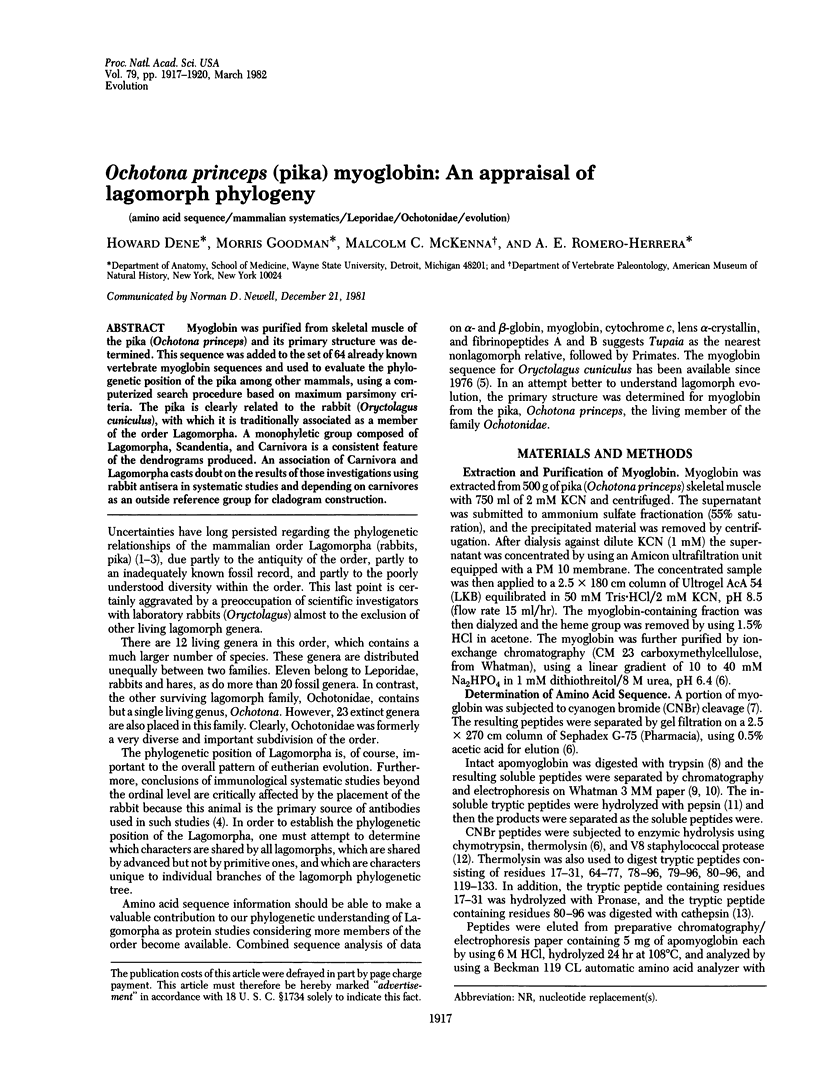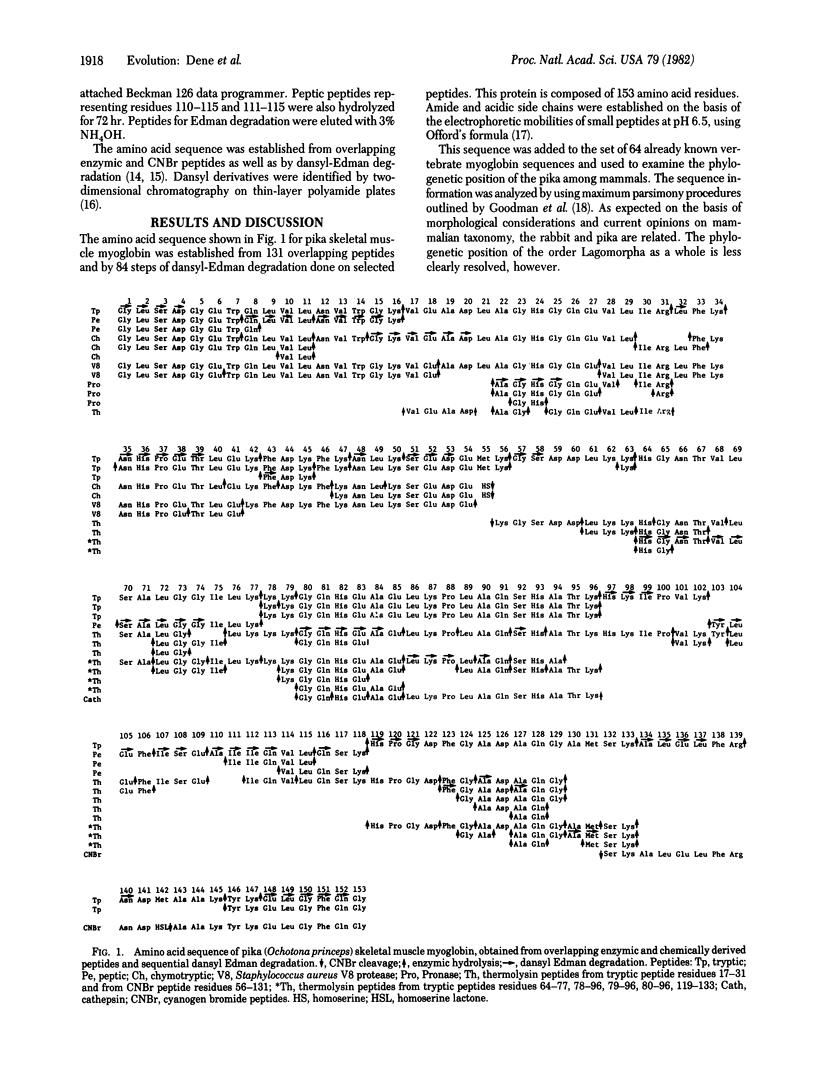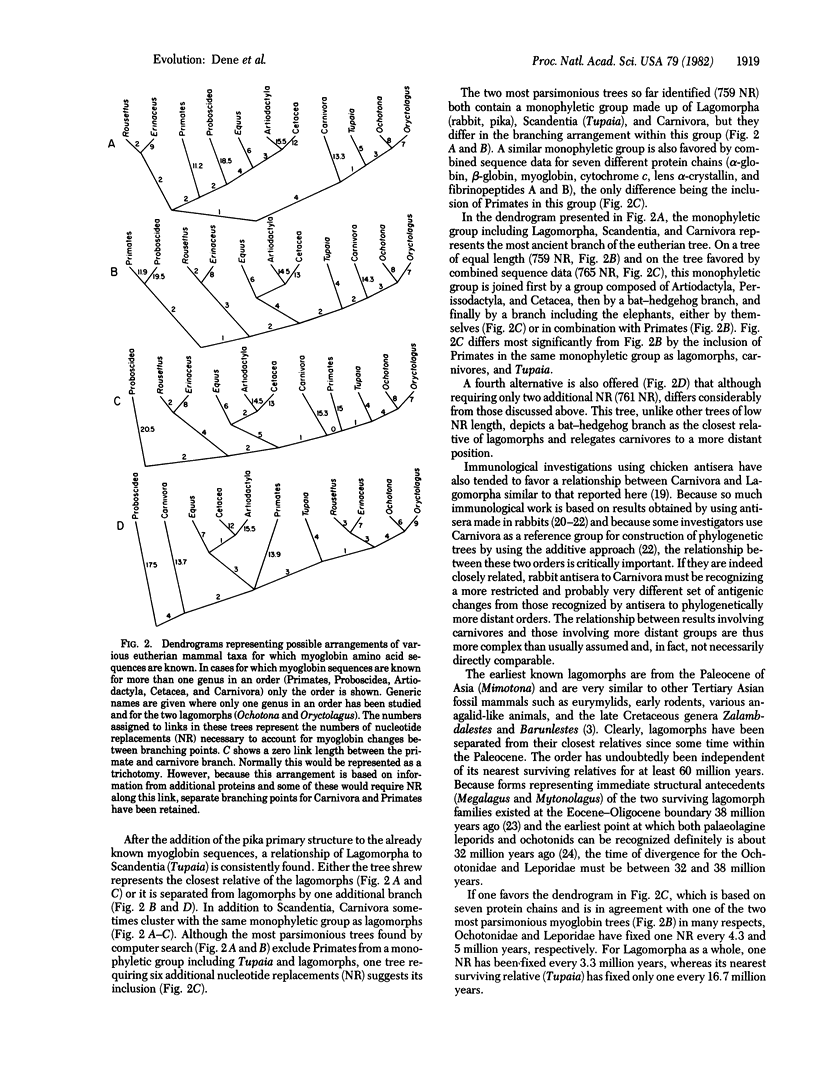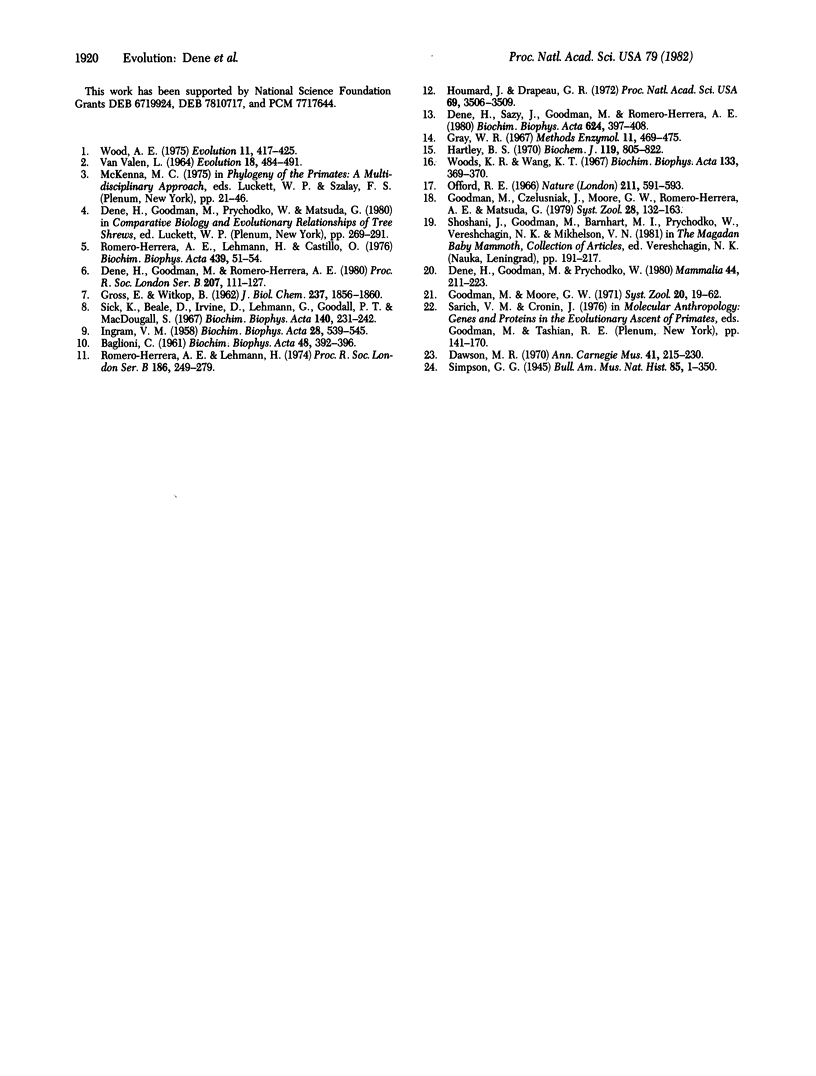Abstract
Myoglobin was purified from skeletal muscle of the pika (Ochotona princeps) and its primary structure was determined. This sequence was added to the set of 64 already known vertebrate myoglobin sequences and used to evaluate the phylogenetic position of the pika among other mammals, using a computerized search procedure based on maximum parsimony criteria. The pika is clearly related to the rabbit (Oryctolagus cuniculus), with which it is traditionally associated as a member of the order Lagomorpha. A monophyletic group composed of Lagomorpha, Scandentia, and Carnivora is a consistent feature of the dendrograms produced. An association of Carnivora and Lagomorpha casts doubt on the results of those investigations using rabbit antisera in systematic studies and depending on carnivores as an outside reference group for cladogram construction.
Full text
PDF



Selected References
These references are in PubMed. This may not be the complete list of references from this article.
- BAGLIONI C. An improved method for the fingerprinting of human hemoglobin. Biochim Biophys Acta. 1961 Apr 1;48:392–396. doi: 10.1016/0006-3002(61)90490-5. [DOI] [PubMed] [Google Scholar]
- Dene H., Goodman M., Romero-Herrera A. E. The amino acid sequence of elephant (Elephas maximus) myoglobin and the phylogeny of Proboscidea. Proc R Soc Lond B Biol Sci. 1980 Feb 13;207(1166):111–127. doi: 10.1098/rspb.1980.0016. [DOI] [PubMed] [Google Scholar]
- Dene H., Sazy J., Goodman M., Romero-Herrera A. E. The amino acid sequence of alligator (Alligator mississippiensis) myoglobin. Phylogenetic implications. Biochim Biophys Acta. 1980 Aug 21;624(2):397–408. doi: 10.1016/0005-2795(80)90081-1. [DOI] [PubMed] [Google Scholar]
- GROSS E., WITKOP B. Nonenzymatic cleavage of peptide bonds: the methionine residues in bovine pancreatic ribonuclease. J Biol Chem. 1962 Jun;237:1856–1860. [PubMed] [Google Scholar]
- Hartley B. S. Strategy and tactics in protein chemistry. Biochem J. 1970 Oct;119(5):805–822. doi: 10.1042/bj1190805f. [DOI] [PMC free article] [PubMed] [Google Scholar]
- Houmard J., Drapeau G. R. Staphylococcal protease: a proteolytic enzyme specific for glutamoyl bonds. Proc Natl Acad Sci U S A. 1972 Dec;69(12):3506–3509. doi: 10.1073/pnas.69.12.3506. [DOI] [PMC free article] [PubMed] [Google Scholar]
- INGRAM V. M. Abnormal human haemoglobins. I. The comparison of normal human and sickle-cell haemoglobins by fingerprinting. Biochim Biophys Acta. 1958 Jun;28(3):539–545. doi: 10.1016/0006-3002(58)90516-x. [DOI] [PubMed] [Google Scholar]
- Offord R. E. Electrophoretic mobilities of peptides on paper and their use in the determination of amide groups. Nature. 1966 Aug 6;211(5049):591–593. doi: 10.1038/211591a0. [DOI] [PubMed] [Google Scholar]
- Romero-Herrera A. E., Lehmann H., Castillo O. The primary structure of the myoglobin of rabbit (Oryctolagus cuniculus) Biochim Biophys Acta. 1976 Jul 19;439(1):51–54. doi: 10.1016/0005-2795(76)90159-8. [DOI] [PubMed] [Google Scholar]
- Romero-Herrera A. E., Lehmann H. The amino acid sequence of human myoglobin and its minor fractions. Proc R Soc Lond B Biol Sci. 1974 Jul 9;186(1084):249–279. doi: 10.1098/rspb.1974.0048. [DOI] [PubMed] [Google Scholar]
- Sick K., Beale D., Irvine D., Lehmann H., Goodall P. T., MacDougall S. Haemoglobin G Copenhagen and haemoglobin J Cambridge. Two new beta-chain variants of haemoglobin A. Biochim Biophys Acta. 1967 Jun 27;140(2):231–242. doi: 10.1016/0005-2795(67)90463-1. [DOI] [PubMed] [Google Scholar]
- Woods K. R., Wang K. T. Separation of dansyl-amino acids by polyamide layer chromatography. Biochim Biophys Acta. 1967 Feb 21;133(2):369–370. doi: 10.1016/0005-2795(67)90078-5. [DOI] [PubMed] [Google Scholar]


